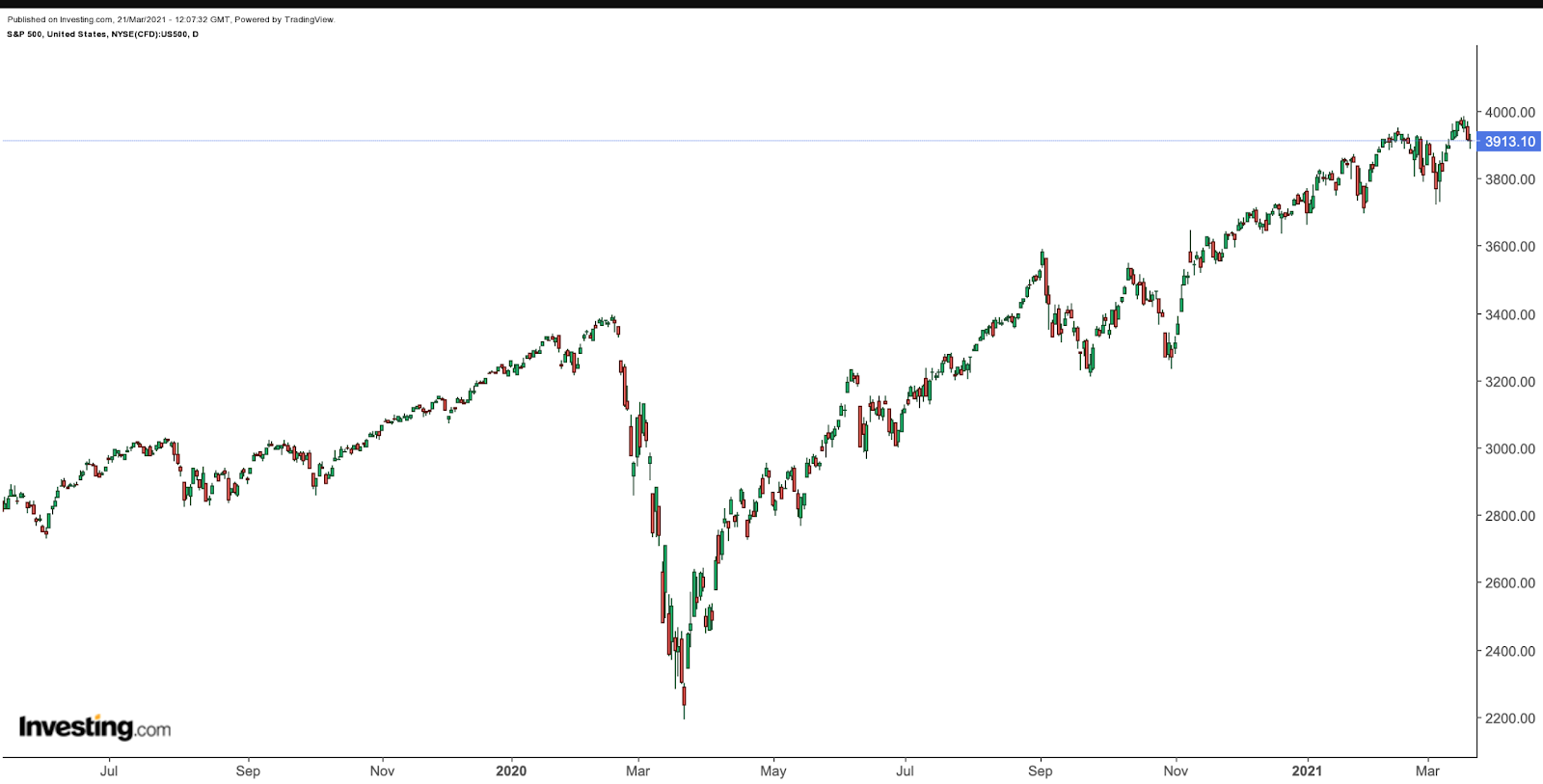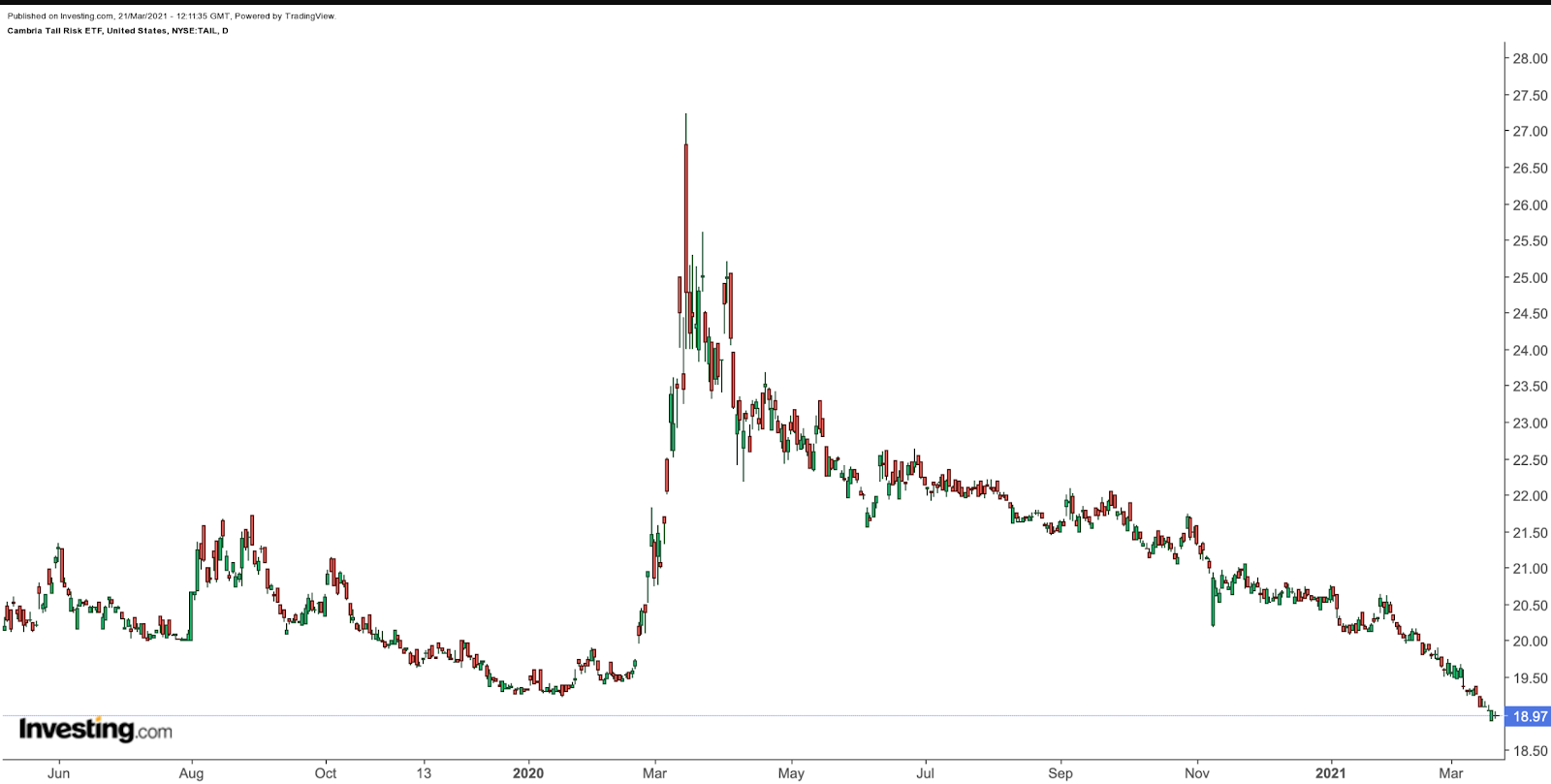The S&P 500 index is up over 4% year-to-date (YTD). It hit a record-high on Mar. 17.
Plus, over the past 12 months, it has returned about 62%. As broader markets climb higher, many investors wonder if there could be a correction in the coming weeks.

April means the start of a new earnings season, leading to increased choppiness, especially in popular stocks that are regularly in the limelight. Yet, it is important to remember that market declines are a regular part of the cycle.
Volatility in the markets does not necessarily mean investors should constantly be fearful or hit the 'sell' button in a panic. Instead, they might take a step back and re-evaluate their portfolios.
Depending on their risk/return profiles, they might want to realize some of their paper profits and trim the overvalued names.
It would also be important to diversify holdings. Therefore, today's article introduces two exchange-traded funds (ETFs) that could be appropriate for investors who believe markets remain fluid and want to increase exposure to defensive names in their portfolios.
1. Invesco DB US Dollar Index Bullish Fund
- Current Price: $24.78
- 52 Week Range: $24.09 - $28.90
- Expense Ratio: 0.75%
Our first fund is a currency exchange-traded fund (CETF) that provides exposure to foreign exchange (forex) markets. In previous articles, we discussed various CETFs, including the Invesco DB US Dollar Index Bullish Fund (NYSE:UUP). We believe it is timely to revisit this ETF.
The fund has exposure to futures contracts in the US Dollar Index. Between March 2020 and January 2021, the index, which measures the value of the greenback relative to a basket of six currencies from some of the most significant US trading partners, declined steadily.
We should note that USDX is heavily exposed to the euro, as well as other European currencies. Over the past several weeks, however, it has found support around the 90 level and it is currently flirting with 92.
Currency strength (or weakness) is only relative to the weakness (or strength) of other currencies. UUP also declines when this trade-weighted basket strengthens. Thus, UUP fell from March 2020 to January 2021, and then found support around $24. Bulls believe it could go past $25 soon as the greenback appreciates.
We believe that during 2021 a period of consolidation will be followed by an up-move in the US dollar. Interest rates, economic developments as well as national and global politics affect the value of a currency.
In the coming months, we expect the US economy to outpace those of the European Union (EU) and many other nations. The vaccine rollout in many EU states has been slow and the continent is talking about the third wave of COVID-19. Therefore, we are cautiously bullish on UUP and would be comfortable in holding a long position on the US dollar via the fund. We also believe such a long position could act as a hedge against a fall in broader equity markets.
On a final note, other CETFs we have covered include:
- Invesco CurrencyShares® British Pound Sterling Trust (NYSE:FXB)
- Invesco CurrencyShares® Japanese Yen Trust (NYSE:FXY)
- Invesco DB US Dollar Index Bearish Fund (NYSE:UDN)
We also discussed how Emerging Markets bulls usually cheer a weak US dollar (here) and vice versa (here).
2. Cambria Tail Risk ETF
- Current Price: $18.97
- 52 Week Range: $18.88 - $25.68
- Dividend Yield: 1.25%
- Expense Ratio: 0.59%
In recent weeks, we've looked at various ETFs that employ hedging strategies with covered calls, including LEAP options, and put options that give the holder the right to sell shares at a certain price on or before the expiry date. We also have been discussing covered calls as well as diagonal debit spreads with LEAPS on single stocks.
Such strategies can be used for both hedging and speculative purposes. Nonetheless, most market participants do not always feel comfortable with these more sophisticated approaches. So fund sponsors have been introducing actively-managed ETFs with various derivative products that could potentially help hedge portfolios.
Nonetheless, most market participants do not always feel comfortable with these more sophisticated approaches. So fund sponsors have been introducing actively-managed ETFs with various derivative products that could potentially help hedge portfolios.
Our second fund is one of those niche ETFs. The Cambria Tail Risk ETF (NYSE:TAIL) has a portfolio of put options purchased on the US stock market. The fund began trading in April 2007, and assets under management are $312 million.
TAIL is defensive in nature as it aims to mitigate significant downside market risk. The fund invests a small percentage (currently about 5%) in a basket of out-of-the-money (OTM) put options on the S&P 500 index. The rest of the assets (about 95%) are in intermediate-term US Treasuries.
Since the start of the year, TAIL is down about 7%. And over the past year, it has declined 23.5%. Yet, the fund hit an all-time high in mid-March 2020. When compared with the chart of the S&P index, the reverse moves become clear. A year ago, as broader markets declined, the put options held by the fund would have increased in value and exercised profitably. Treasuries can also be an effective hedge against market downturns when equity prices decline.
But since spring 2020, the S&P has been going up while volatility has been falling. As a result, TAIL's performance has been on the decline, too.
An ETF such as TAIL may be appropriate for bearish investors as a hedge against market declines and rising volatility.
But the decline would need to be substantial for the fund to post significant returns. Market participants should note that the fund will not have positive returns in years, such as the past 12 months, when markets rise and volatility declines.
